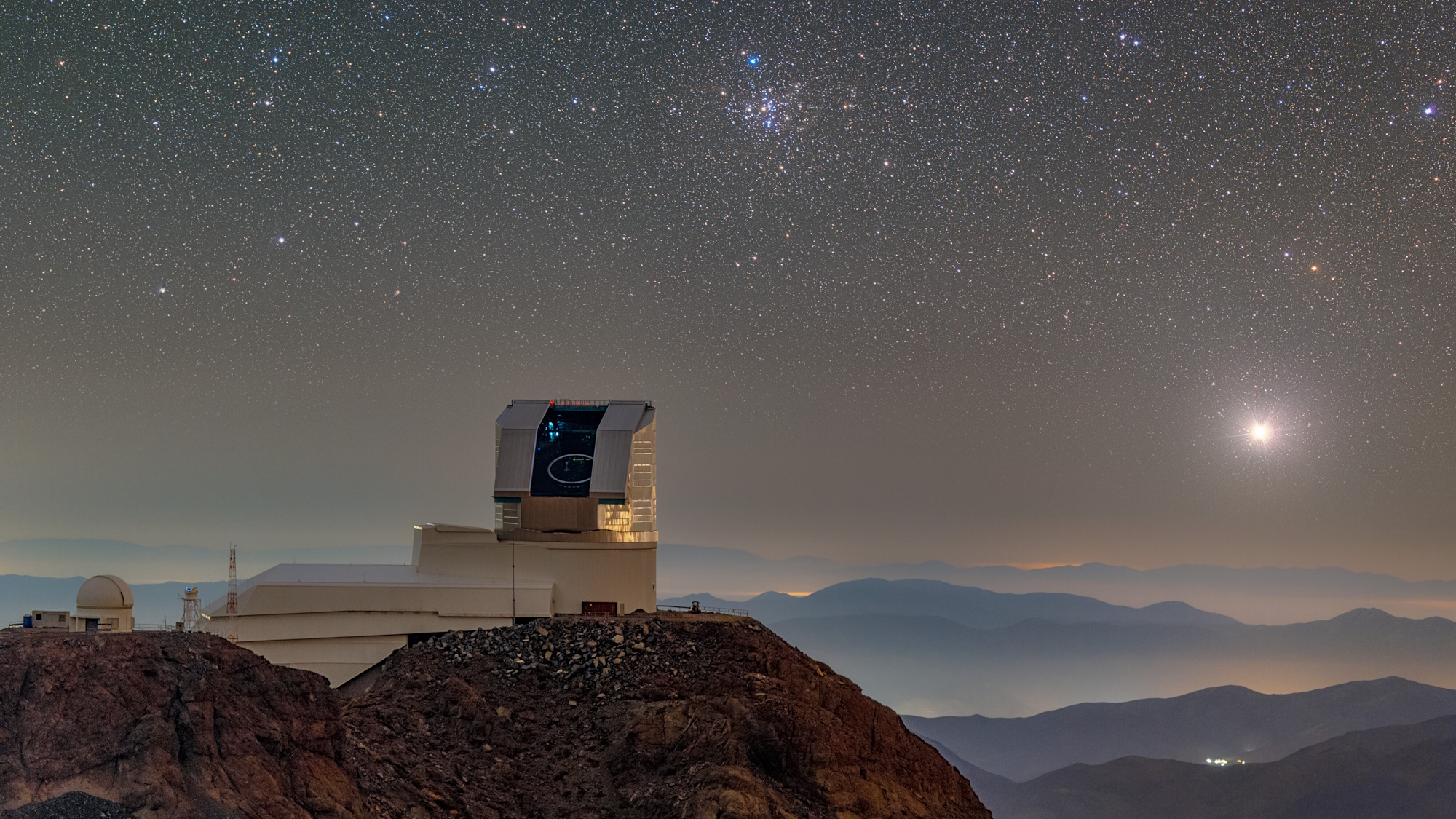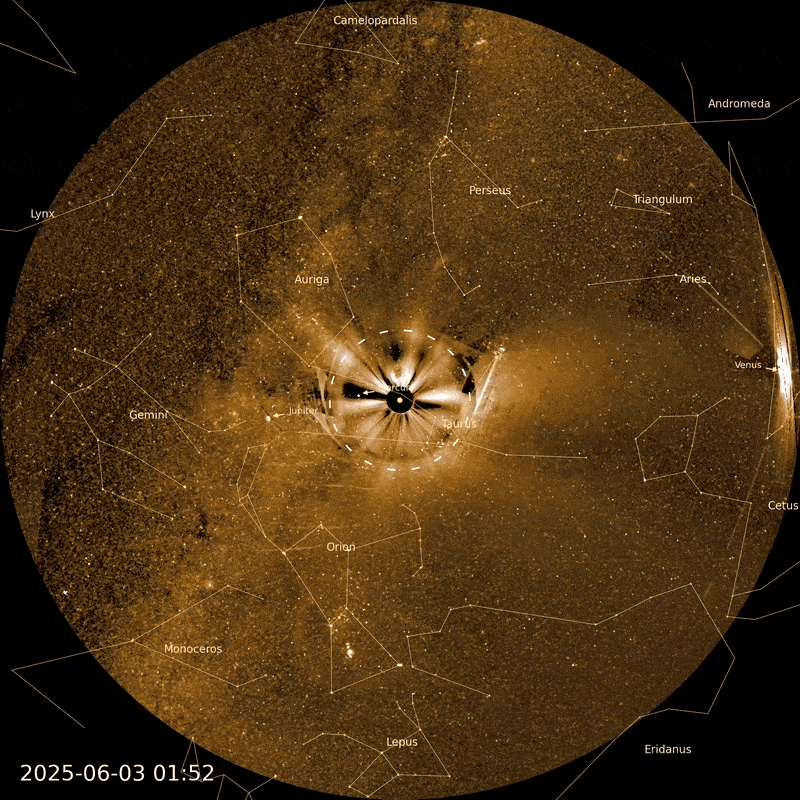NASA Finally Contacts Voyager 2 After Unprecedented Seven-Month Silence
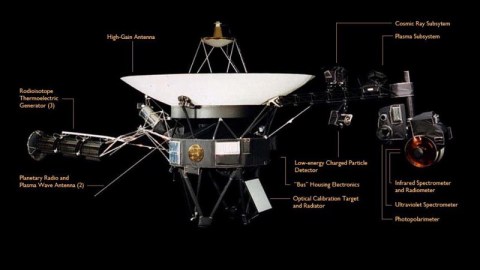
As long as it remains operational, we’ll have a chance to conduct groundbreaking science with it.
In the history of spaceflight, only five spacecraft ever launched by humanity possess enough energy to leave the gravitational pull of our Solar System. While thousands upon thousands of objects have been launched into space, overcoming the gravitational pull of planet Earth, the Sun is more than 300,000 times as massive as our home planet, and is far more difficult to escape from. A combination of fast launch speeds and gravitational assists from other planets were required to leave our Solar System, with only Pioneer 10 and 11, Voyager 1 and 2, and New Horizons attaining “escape velocity” from our Sun.
While Pioneer 10 and 11 are now inactive, New Horizons and both Voyager spacecrafts remain operational, powered by radioisotope thermoelectric generators. Voyager 1 has overtaken all other spacecrafts and is now the most distant: 22 billion km away, pulling away from the slightly slower Voyager 2 at “only” 18.8 billion km distant. Since the coronavirus pandemic in mid-March, NASA has had no contact with Voyager 2, but an upgraded deep space network dish made a successful call on October 29. Here’s the fascinating science that keeps us in touch with the most distant objects ever launched from Earth.
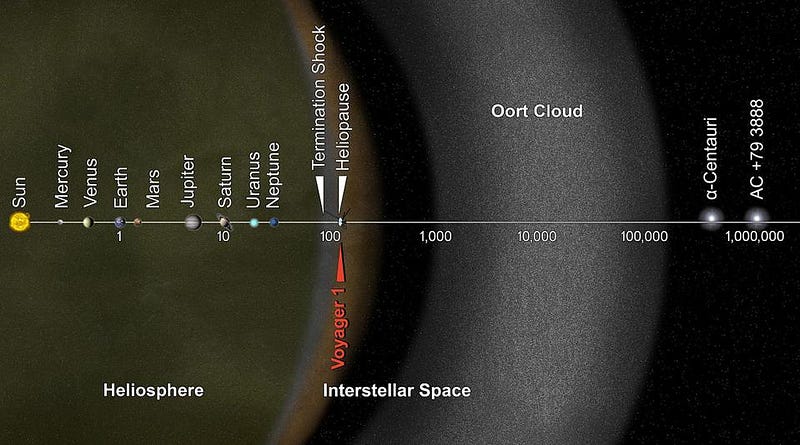
When it comes to sending and receiving signals across astronomical distances, there are three enemies you have to overcome:
- distance,
- time,
- and power.
The farther away a spacecraft is from you, the farther a signal that you send has to travel before it reaches it, the longer it takes to get there, and the lower in power that signal is when it arrives. If a spacecraft is twice as distant as another, the distance to it is twice as great, the time it takes a light signal to travel to it is twice as great, and the signal power that it receives is only one-fourth as great, since light signals spread out in the two dimensions perpendicular to the spacecraft’s line-of-sight. The farther away a spacecraft is, it’s harder to contact, it takes longer to contact it, and it requires more energy to send-or-receive the same signal.

The way an electromagnetic signal works — whether you’re detecting it with a refracting lens, a reflecting dish, or a linear antenna — is straightforward: it spreads out in a spherical shape from its source. Because there’s a certain amount of inherent background noise to any observation you’d make, from both terrestrial and celestial sources, you need your signal to cross a certain threshold to be detectable, rising above the noise background. On the receiving end, that means larger detectors are better, while on the transmitting end, that means a higher-powered transmitter is better.
Unfortunately, the spacecraft that have already been launched cannot have their hardware upgraded in any way; once they’re launched, they’re simply stuck with the technology they’ve been outfitted with. To make matters worse, the spacecraft themselves are powered by radioactive sources, where specially chosen material, such as plutonium-238, radioactively decays, emitting heat that gets converted into electricity. As time goes on, more and more of the material decays away, decreasing the power available to the spacecraft for both transmitting and receiving signals.

As the amount of heat energy produced by radioactive material decreases, the conversion from heat energy into electrical energy becomes less successful: the thermocouples degrade over time and lose efficiency at lower powers. As a result, the power available to the spacecraft through radioisotope thermoelectric generators has decreased precipitously. As of 2020, the plutonium-238 onboard is producing just 69% of the initial heat energy, and that translates into only about ~50% of the original output power.
Even though Voyager 1 and 2 are now 43 years old and farther from Earth than any other operating spacecraft in history, however, they’re not lost to us yet. The reason is simple: as we improve our transmission and receiving capabilities back here on Earth, we can both send out more powerful signals to be received by these distant spacecraft, and we can do a better job of detecting the spacecrafts’ responses even at low powers. The key is through NASA’s Deep Space Network: a collection of radio antennae designed to communicate with humanity’s most distant spacecraft.
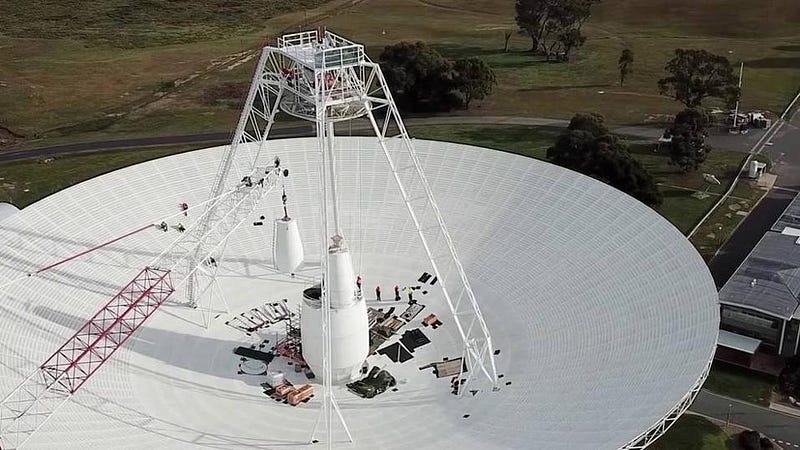
There are three major radio antenna facilities around the world: one in Canberra, Australia, one in Madrid, Spain, and one in Goldstone, California. These three facilities are spaced roughly equidistant around the globe; for almost any location that you can imagine putting a spacecraft, at least one of the antennae will have a direct line-of-sight to that spacecraft at any given time.
Almost, of course. You might recognize that the facility in Canberra, Australia, is the only one located in Earth’s southern hemisphere. If a spacecraft is very far south — so far south that it’s invisible from locations like California or Spain — then the Australian dish would be the only one capable of communicating with it. While both Pioneers, New Horizons, and the Voyager 1 spacecraft could all be contacted (in theory) by all three of these facilities, Voyager 2 is the exception for one major reason: its 1989 flyby of Neptune and its giant moon, Triton.
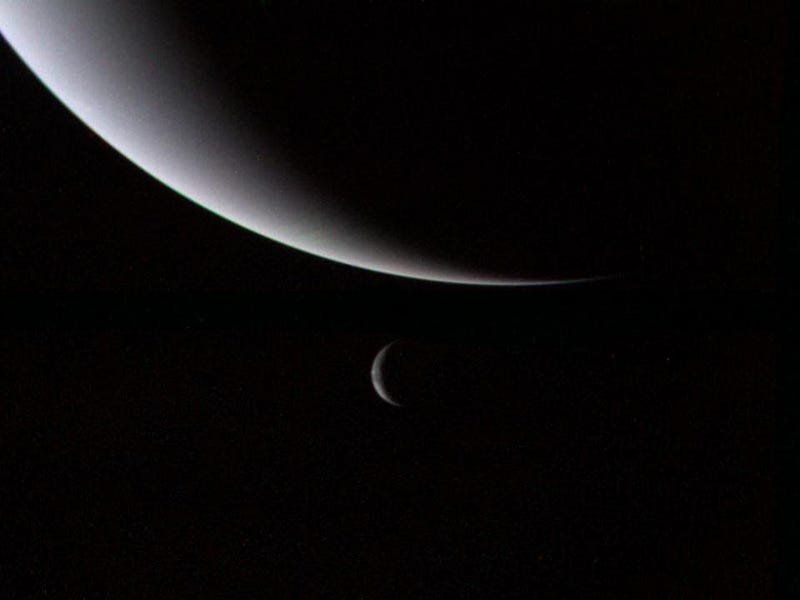
The trip to Neptune still, even to this day, represents the only close encounter humanity has ever had with our Solar System’s eighth and final (for now) planet, as well as with Triton, the largest known object to originate in our Kuiper belt. The discoveries from that flyby were spectacular, as a number of fantastic features were discovered: Neptune’s ring system, a number of small, inner moons, and a series of features on Triton, including cryovolcanoes and varied terrain similar to what we’d discover some 26 years later when New Horizons flew past Pluto.
In order to have a close encounter with Triton, however, Voyager 2 needed to fly over Neptune’s north pole, deflecting Voyager 2’s trajectory far to the south of the plane in which the planets orbit the Sun. Over the past 31 years, it’s continued to follow that trajectory, rendering it invisible to every member of the Deep Space Network except for the one dish in Australia. And since mid-March, 2020, that dish — which includes the radio transmitter used to talk to Voyager 2 — has been shut down for upgrades.
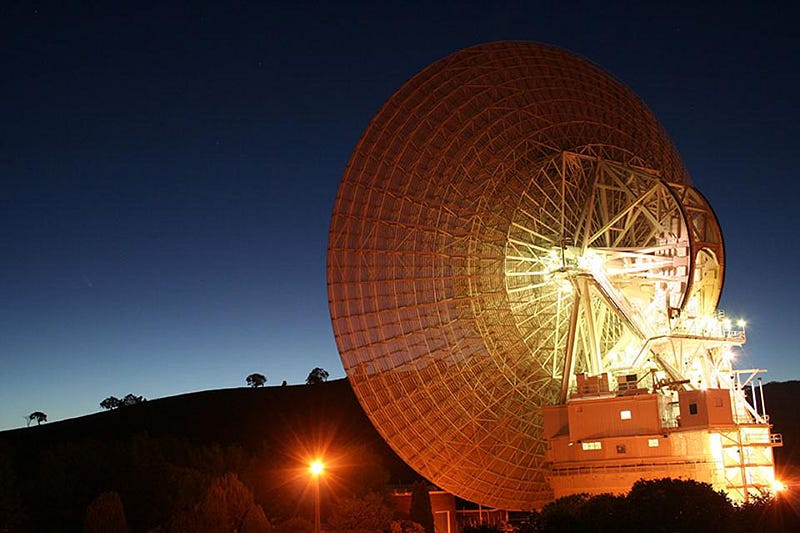
The dish itself is a spectacular piece of technology. It’s 70 meters (230 feet) across: a world-class radio antenna. The instruments attached to it include two radio transmitters, one of which is used to send commands to Voyager 2. That instrument, as of early 2020, was 47 years old, and hadn’t been replaced in all that time. Additionally, it was using antiquated heating and cooling equipment, old and inefficient electronics, and a set of power supply equipment that limited any potential upgrades.
Fortunately, the decision was made to upgrade all of these, which should enable NASA to do what no other facility can do: send commands to Voyager 2. While the spacecraft is still operating — including sending health updates and science data that can be received by a series of smaller dishes also located in Australia — it has been unable to receive commands, ensuring that it will just keep doing whatever it was last doing until those new commands are received.
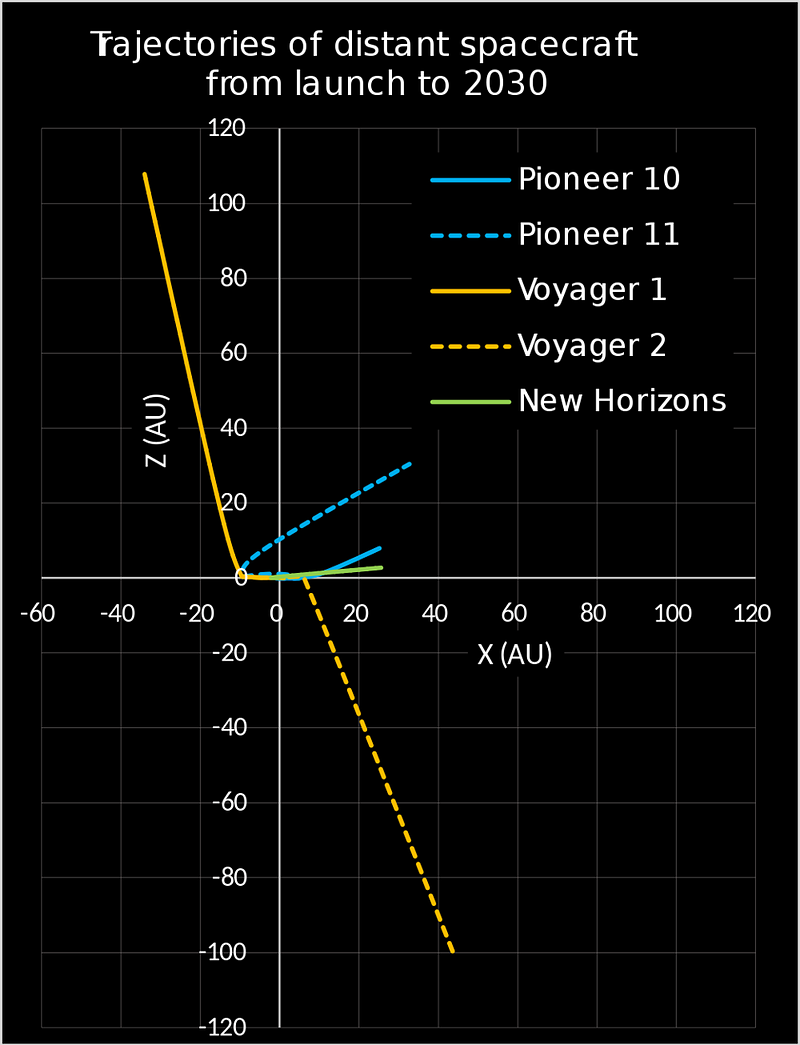
On October 29, 2020, enough of the upgrades had been executed that mission operators for Voyager 2 decided to perform a critical test: to send a series of commands to Voyager 2 for the first time since the upgrades began. According to the project manager of the Deep Space Network for NASA, Brad Arnold:
“What makes this task unique is that we’re doing work at all levels of the antenna, from the pedestal at ground level all the way up to the feedcones at the center of the dish that extend above the rim.”
Although it takes about 36 light-hours for a signal to travel round-trip from Earth to Voyager 2, NASA announced on November 2 that the test was successful. Voyager 2 returned a signal that confirmed the call was received, followed by a successful execution of the commands. According to Arnold, “This test communication with Voyager 2 definitely tells us that things are on track with the work we’re doing.”

The upgrades to this member of the Deep Space Network are on track for completion in early 2021, where they will not only be critical for the continued success of the Voyager 2 mission, but will prepare NASA for a series of upcoming missions. The upgraded infrastructure will play a critical role in any upcoming Moon-to-Mars exploration efforts, will support any crewed missions such as Artemis, will provide communication and navigation infrastructure, and will also assist with communications to NASA’s Mars Perseverance rover, scheduled to land on Mars on February 18, 2021.
This particular dish was constructed in 1972, where it had an original size of 64 meters (210 feet). It was expanded to 70 meters (230 feet) 15 years later, but none of the subsequent repairs or upgrades compare to the work being done today. According to NASA, this is “one of the most significant makeovers the dish has received and the longest it’s been offline in over 30 years.”
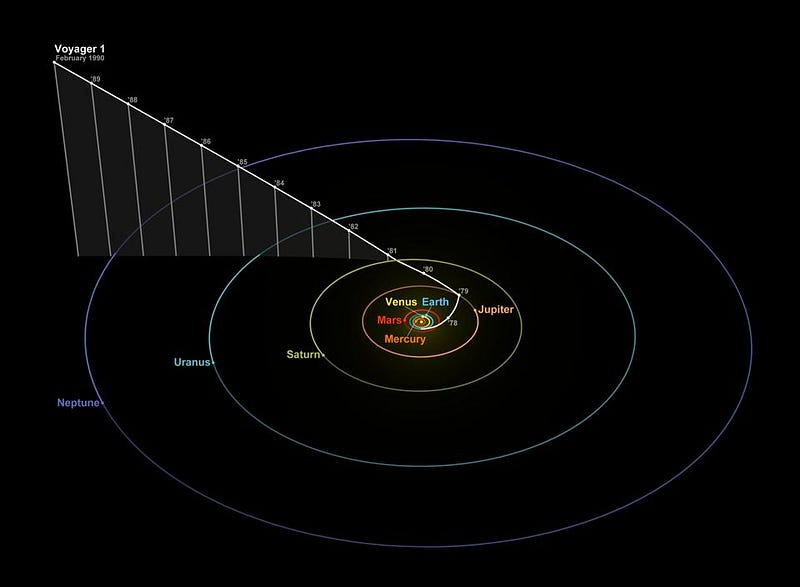
As Voyager 2 and the other escaping spacecraft continue to recede from the Sun, their power levels will continue to drop and it will become progressively more difficult to issue commands to them as well as to receive data. However, as long as they remain functional, even at incredibly low and inefficient power levels, we can continue to upgrade and enlarge the antennae that are a part of NASA’s Deep Space Network to continue to conduct science with them. As long as these spacecraft remain operational in some capacity, simply continuing to upgrade our facilities here on Earth will enable us to gather data for years, and likely even decades, to come.
Voyager 1 and 2 are already the most distant operational spacecraft ever launched from Earth, and continue to set new records. They’ve both passed the heliopause and entered interstellar space, probing different celestial hemispheres as they go. Each new piece of data they send back is a first: the first time we’ve directly sampled space outside of our Solar System from so far away. With these new upgrades, we’ll have the capacity to see what we’ve never seen before. In science, that’s where the potential for rich, new discoveries always lies.
Starts With A Bang is written by Ethan Siegel, Ph.D., author of Beyond The Galaxy, and Treknology: The Science of Star Trek from Tricorders to Warp Drive.

